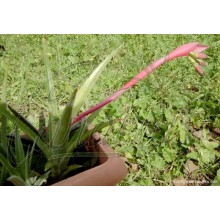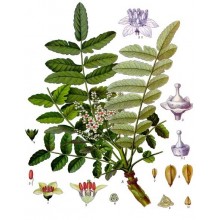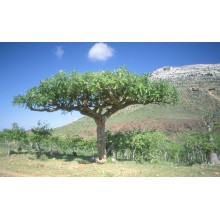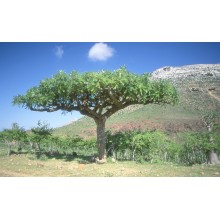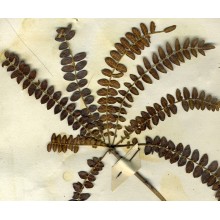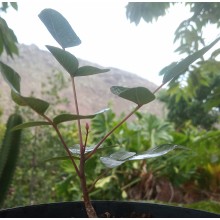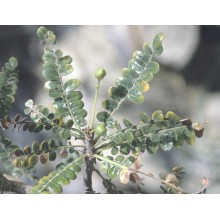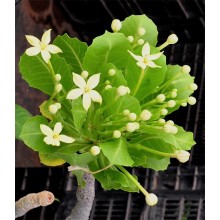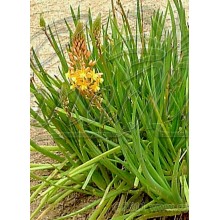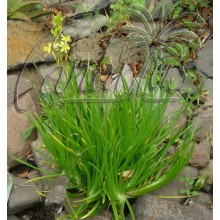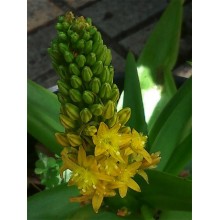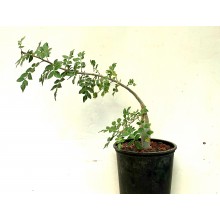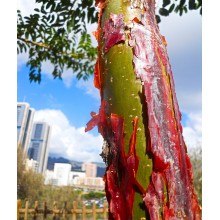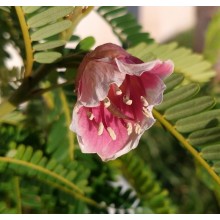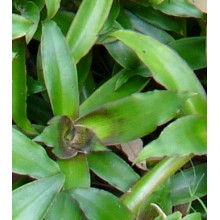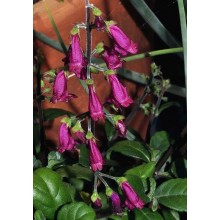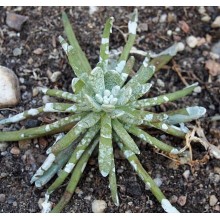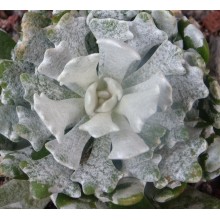Succulents There are 628 products.

World deserts and dry areas are home to the most interesting plants. Canarius offers an increasing selection of succulent plants of maximum quality, because they are grown outdoors, under the full sun of the Canary Islands.
Succulents or "fat plants" are water-retaining species, adapted to dry conditions. They store succum (juice, water) in their leaves, stems or roots, and often show a stout and fleshy appearance.
Subcategories
-
Agave
Agave is a genus of succulent plants from America. Some species grow in cold areas and take hard frost, while some others live in tropical climates. Some are tiny dwarfs and some are giants, up to 2 or 3 m wide.
Cold hardy agaves can create an exotic effect in your garden. Agave species make fine companions to palms or cacti. Variegated agaves are incredibly sought after by collectors. Our web shop offers an ever changing selection of species. We ship bare rooted plants, unless otherwise specified.
-
Aloe, Gasteria & Haworthia
Aloe, Gasteria and Haworthia are three related genera, comprising hundreds of succulent plants. They are all easily grown in pots. A few adapt to low-light levels of indoor conditions and can be grown as house plants.
- Aloe is a genus of about 400 species, native to Africa, Arabia and Madagascar. Small or dwarf aloes are becoming especially popular in colder climates as they can be taken indoors during the hardest months.
- Gasteria includes some 80 species endemic to South Africa, known for their spectacular leaves which are glossy, mottled and textured. They bloom in Spring-Summer with long spikes of small orange flowers. Some species are so variable that we offer particular clones from specific locations.
- Haworthia is a genus endemic to South Africa with about 70 species and a number of local subspecies, varieties and forms. Leaves are often banded, speckled, dotted, or semi-translucent and show wide variations.
-
Crassulaceae
This is a new, growing section of species from the family Crassulaceae. There are about 1,400 species in 33 genera and their distribution is worldwide, but mostly occur in the Northern Hemisphere and Southern Africa, especially in dry habitats. Here you can buy healthy, sun-hardened plants grown in the Canary Islands and shipped to your home.
-
Mesembs
This group of desert plants is briefly named Mesembs because they belong to a botanical family formerly named Mesembryanthemaceae. There are almost 2.000 species, mainly found in Southern Africa, with extreme adaptations to dry habitats. Some are called "living stones", as they look like pebbles. Many are easy to grow and their main need is full sun. Some are difficult because they grow in truly extreme areas.
Our Web Shop offers sun grown healthy plants, with compact and colourful leaves. Some plants are sold as cuttings, and others as rooted plants, of at least two years old.
-
Sansevieria
Recently assigned to the family Asparagaceae, the genus Sansevieria counts about 70 species, nearly all native to Africa, Arabia and Madagascar. Perennial herbs adapted to dry habitats with stiff, succulent leaves, their length ranges from a few centimeters to 2 meters. Sansevieria trifasciata and its many cultivars are among the most popular houseplants, popularly called mother in law's tongue. A well grown plant usually produces a spike of many white, richly scented flowers and then orange berries. Even the rarest species are resistant to neglect, provided you keep them from frost in winter and scorching sun in summer.
-
Hoya
Hoyas are twining vines, with showy exotic flowers, from the rainforests in Asia and Oceania. Most species grow in bright shade or morning sun, but they will also grow indoors as house plants. They are well suited for baskets, trellises or ladders. They tolerate a few weeks of drought but they are sensitive to frost and cold. Many hoyas are easy to grow and bloom, while some are tricky and rare.
-
Asclepiads
Asclepiads or Asclepiadoideae are a subfamily in the Apocynaceae, with about 2900 species. There are lots of leafless stem succulents but also perennial herbs, shrubs, lianas or rarely trees. They produce remarkable flowers, for the complex mechanisms they have developed for pollination. Many species produce an unusual fragrance, often called "carrion", and attracts flies for pollination. -
Caudiciforms
These plants from dry areas produce an unusually thick stem, the caudex. They are also called pachycauls and they have a disproportionately thick trunk, often with few branches. The caudex can be hidden underground, but in most cases they grow upwards, forming spectacular trees. The largest caudiciforms in the world are the baobabs. -
Other succulents
Here you will find all those species of desert plants that are not included in their own category. We will place here all plants from unusual families, other than Agaves, Aloes, Crassulaceae, Sansevieria, Mesembs, Epiphytic cacti, etc.
-
Billbergia sp. Suculenta
Billbergia sp. Suculenta
Unusually succulent pink-blooming Billbergia, hardy to light frost. It is polymorphic and grows from a juvenile through three stages: 1. short-leaved compact succulent rosette, 2 tall, thin leaves, 3 a typical tube billbergia.
14,50 € -
Boswellia dioscoridis
Boswellia dioscoridis
It is widely distributed in dry forests, semi-deciduous forests, and less frequently in scrub with Croton socotranus, at an altitude of 50 to 600 metres. https://es.wikipedia.org/wiki/Boswellia_socotranaDe Mauro Raffaelli - Trabajo propio, CC BY-SA 3.0, https://commons.wikimedia.org/w/index.php?curid=19881922
114,00 € -
Boswellia elongata
Boswellia elongata
We offer a 2 year old seedling of the rare Socotran Frankincense. Leaves are dark bronze and of a very elegant shape, becoming feather-shaped as soon as the plant reaches a certain size.
38,70 € -
Boswellia elongata - Large
Boswellia elongata - Large
We offer a 5 year old seedling of the rare Socotran Frankincense. Leaves are dark bronze and of a very elegant shape, becoming feather-shaped as soon as the plant reaches a certain size.
152,00 € -
Boswellia ovalifoliolata
Boswellia ovalifoliolata
Boswellia ovalifoliolata is native to India, but unlike the widespread Indian species Boswellia serrata, this one is restricted to a rather small area: It is endemic to the Tirumala hills, in the Seshachalam hillranges of Palakonda, in the Eastern Ghats.
156,00 € -
Boswellia socotrana
Boswellia socotrana
It is widely distributed in dry forests, semi-deciduous forests, and less frequently in scrub with Croton socotranus, at an altitude of 50 to 600 metres. https://es.wikipedia.org/wiki/Boswellia_socotranaDe Mauro Raffaelli - Trabajo propio, CC BY-SA 3.0, https://commons.wikimedia.org/w/index.php?curid=19881922
94,20 € -
Bowiea volubilis - Climbing onion
Bowiea volubilis - Climbing onion
Bowiea is one of the most unusual bulbs, attractive because of its beauty and weirdness. The common name "climbing onion" is appropriate, as the plant is a gray-green bulb, often growing exposed above ground and during the growing season it builds a soft climbing green shoot which also bears flowers.
26,80 € -
Brighamia insignis
Brighamia insignis
2 years old, Stem height: 15-20 cm , Unusual "palm-like" Hawaiian plant, with a succulent stem swollen at the base. Flowers are cream - white and fragrant. It is critically endangered in the wild, because its pollinator is now extinct, so the plant does not set seeds well enough. Itt is native to steep, volcanic cliffs and it thrives in pots, even in...
47,50 € -
Bulbine frutescens Orange Form
Bulbine frutescens Orange Form
15-25 cm clump. - Clumping, freely-flowering, South African succulent. This is the orange flowered form.
10,70 € -
Bulbine frutescens Yellow Form
Bulbine frutescens Yellow Form
15-20 cm clump. Succulent clumping perennial, relative of the genus Aloe, native to the Cape region of South Africa. Bears nice spikes in Spring and Summer. This is the yellow flowered form.
10,70 € -
Bulbine natalensis
Bulbine natalensis
Succulent evergreen plant that looks like a toothless aloe, it has fragrant yellow flowers. Hardy to about -3 C.
10,70 € -
Bursera fagaroides
Bursera fagaroides
This fragrant "copal" is a shrub to small tree, native to different dry areas of Mexico. It becomes a perfect bonsai subject if we keep it in pots and it builds a crown with a fascinating shape.
38,60 € -
Bursera fagaroides - LARGE
Bursera fagaroides - LARGE
This fragrant "copal" is a shrub to small tree, native to different dry areas of Mexico. It becomes a perfect bonsai subject if we keep it in pots and it builds a crown with a fascinating shape.
114,20 € -
Cadia purpurea
Cadia purpurea
Cadia is an ornamental shrub from Eastern Africa and Arabia, at 500-2100 m asl. It has graceful arching branches with pinnate leaves and bell-shaped pink to purple flowers.
48,30 € -
Callisia fragrans
Callisia fragrans
Pack of 2 rosettes of 10-20 cm - Ornamental creeping plant with funnel-shaped rosettes producing tall spikes of cream-white flowers. It is a semi-succulent, said to have medicinal properties. It can be grown in baskets, simple pots or as a ground cover.
10,60 € -
Capitanopsis brevilabra
Capitanopsis brevilabra
The highly ornamental species is native to a small area in southeastern coastal Madagascar by Saint Lucie, in the humid coastal forest and there is threatened with habitat loss from deforestation and mining. Leaves are succulent, dark green and glossy and flowers are deep purple and showy, with a metallic shine.
19,00 € -
Caputia scaposa var. addoensis
Caputia scaposa var. addoensis
Graceful succulent with rosettes of grey leaves coated in a white felt, which typically cracks after a sudden rain. It was formerly placed in the genus Senecio, under the name Senecio scaposus ssp. addoensis. It is fairly easy in cultivation but it is slow.
19,20 €
At the moment there are few products in this category Succulents


























